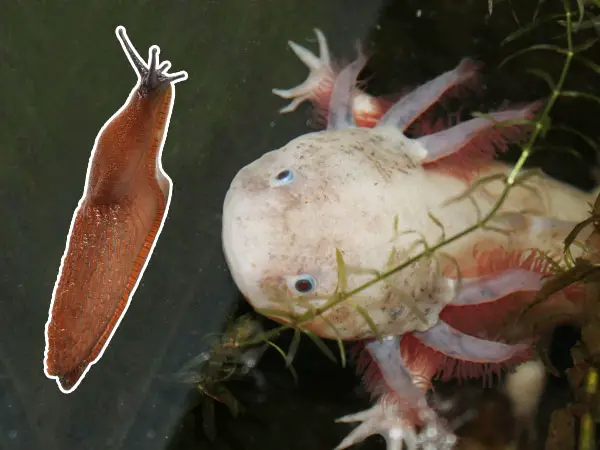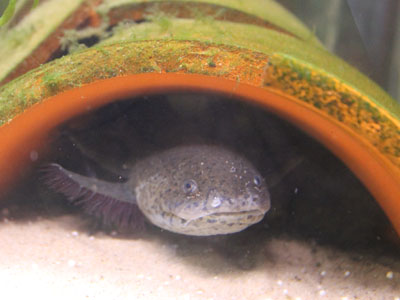There comes a sad time for the inevitable. Every pet owner has to face this difficult period in their lives when their favorite pet passes away. Sometimes it’s a result of an ongoing disease, while in other cases, it’s a sudden thing. And when it’s sudden, it’s especially hard to deal with.

For axolotls, the death can happen in a matter of days. And it’s even harder when you don’t know exactly why it has happened. It’s better to know why it happened in order to prevent the same things from happening in the future. In some cases, you can’t prevent it. Other times, it’s an avoidable thing that we could’ve solved earlier.
Axolotls have a relative long lifespan, but there are couple reasons why axolotl die at earlier age.
Reasons Why Axolotls Die
In this article, we’ll take a look at some of the most common reasons why axolotls die. We’ll also talk about how you can avoid them from happening in the future.
Poor Water Quality
Poor water quality is one of the most common reasons for axolotl deaths, and can happen without the owner knowing. It happens due to carelessness. A filter is a must, but some owners still opt to have an axolotl tank without one. That’s not a good idea. Poor water quality can cause a lot of stress and in turn, diseases that can cause death.
Non-Cycled Tank
Again, this can easily be resolved by having a filter. A good filter will cost you, but it guarantees that the water quality will stay at a high level.
But with water cycling, we often forget to do regular water changes. It’s an absolute must, as various chemicals and toxins might start to build up over time, such as ammonia. We can easily prevent that with weekly water changes, and you need to do them even more frequently if the water is on a poor quality level.
High Ammonia Level
Ammonia is an axolotl killer. At high levels, it causes the animal to not function normally; it gets into its internal organs, and it can impact the skin and the exterior of the axolotl. You don’t want this to happen. Although ammonia will be invisible to the naked eye, you need to do regular ammonia checks with either drop tests or test kits.
Ammonia levels should be at 0 ppm at all times. The axolotl is highly sensitive and can die because of it, so perform regular water changes as well.
Water Temperature
Another damaging aspect that can cause death is wrong water temperatures. Especially if they are too high or too low for extended periods. The ideal temperatures for an axolotl tank vary between 16-18 degrees Celsius (60-64 degrees Fahrenheit), although the axolotl can sustain slightly lower or slightly higher temperatures.
But it’s not recommended to keep them in a water with wrong temperatures for longer. After a few days, we’ll notice strange behaviors and on the long-run, can cause diseases and death.
Poor Axolotl Genetics
Sometimes, we just can’t do anything about it. The death might be a part of the genetic construction of the animal, and perhaps it’s more prone to diseases and health problem naturally. Sadly, there’s not much we can do about this, but to pick an axolotl that is less prone for diseases in the future.
But it’s hard to know this without a proper history of the family that it comes from. And nowadays, it is hard to obtain that, so it’s almost impossible to know about such diseases and genetic problems.
Disease or Parasite
In some cases, the death can occur to various diseases or parasites that cause illnesses. These parasites can creep in through food (live fish are especially dangerous for this), or they can start to develop when the water quality is not the best.
The solution is to only feed the axolotl quality foods from a reliable provider. Also, you should keep your tank water as clean as possible. As we can see, poor water quality is one of the primary reasons for many problems, including diseases, parasites, and death.
Inadequate Feeding
Inadequate feeding can come in different forms. Mostly, it happens when we feed the axolotl a poor quality diet. But, it can also happen due to overfeeding or underfeeding, although the former is more common.
Many people don’t know that you should only feed the axolotl twice a week. Poor quality foods can cause problems, especially if you feed it to the axolotl for a longer period of time. As we already said, live fish can carry various parasites that can cause diseases, so make sure you know what you feed your axolotl.
Impaction
Yes, impaction can cause death. It’s incredibly hard to treat an axolotl with impaction. Sadly, sometimes there’s not much we can do. We can try fridging the axolotl for a while, although that alone can bring its own perils.
But what is impaction? It happens when your axolotl consumes something they can’t digest; most often, it’s a piece of gravel that gets stuck in the gut and it can’t get out. Then, it blocks the gut that nothing else can get out, your axolotl can get swollen, and it can lead to death. It’s a tragic problem to have, and you can easily avoid it by not having gravel in the tank.
Keeping Your Axolotls Healthy
Fortunately, there’s some things we can do or change about how we treat our axolotls. Sure, we must try to treat the diseases, but we have to take care about prevention. Here are some tips on how to keep your axolotl as healthy as possible for longer.
Proper Feeding
They often say that you become what you eat, and it’s the same for axolotls. While they don’t actually become what they eat, but it means that if you feed them healthy, quality foods, they will also remain healthy and will live longer.
Choosing the right foods is important. You can give them meat-based pellets, but you absolutely must combine it with other foods. Variety is key. Here, you can give them live foods such as earthworms, bloodworms or crickets. Frozen dried foods should also be considered, and you can get supplements as well.
Regular Water Changes
If you want to prevent a poor quality of water, then performing regular water changes is essential. It removes the toxins and other harmful pieces from the water, and you replace them with fresh water full of quality nutrients.
It should be done at least on a weekly basis, if not even more often. If the water quality is already at a low level, you can do it every couple of days, or every day, even. It’s recommended to do water cycles of 20% of the water, but if the water quality is poor, you can change even more water.
In some cases, 50% water changes should be done, especially if there is a lot of ammonia in the water.
Regular Tank Maintenance
While this also entails regular water changes, there’s much more to it than just that. For a start, you should be doing regular water checks – checking the water temperature, the parameters, ammonia levels, and so on. Then, you should check on your axolotl and its behavior, what it is eating, and its general condition.
Then comes the substrate and the plants – you can (or should) clean the substrate at least monthly. A lot of debris can find its way into the substrate. If you have rocks, take them out and clean them. Other substrate types can be vacuumed.
Clean the filter and replace the cartridges if needed. Make sure that all other appliances, such as heaters or chillers, work properly as well.
Prevent or Treat Diseases Fast
Prevention is key. Do everything you can to avoid having diseases, and to ensure your axolotls stay safe and healthy. If the diseases do come, though, you have to act fast.
Do everything you can to help the axolotl fight the disease. Ensure the water is on a good level of quality and that the temperatures are right. If you don’t know what to do, contact your vet or someone who knows more about exotic animals such as axolotls.
Stable Water Temperature
Having stable water temperatures is a must. The temperatures should be between 16-18 degrees Celsius (60-64 degrees Fahrenheit), and you should do everything you can to keep them in those levels.
It might require you to buy a chiller; although one is costly, it’s an absolute must if the room temperatures are too high for axolotls. Keep the tank out of direct sunlight and make sure that the lights don’t heat the water too much.
On the other hand, make sure the water doesn’t cool down too much.
Conclusion
Seeing your axolotl die is an extremely sad thing. The average age of an axolotl is about 15 years, and you might see it die naturally of old age. In some cases, death is avoidable and preventable, so do everything you can to avoid diseases and death before it’s too late.





My 10month old female Simpa dies but my other 3 10month olds and 1 1/2 year old are completely fine, what happened??
My water perimeters are fine, no ammonia , my temperatures do fluctuate, but not drastically e.g. from 14.c to 18.c, no no, only buy half a degrees and I do 1 water change every 5 days so it’s not my water and no bits were missing from my plants and I have no substrates so how did she die???? ?
I’m sorry to hear that. It is very hard to tell what happen to your axolotl. I assume, it was a genetic problem. Some times it happens, unfortunately.
My male 1month old axolotl stopped eating, his skin started to get white and patchy, and then he died. And I don’t know what caused it.